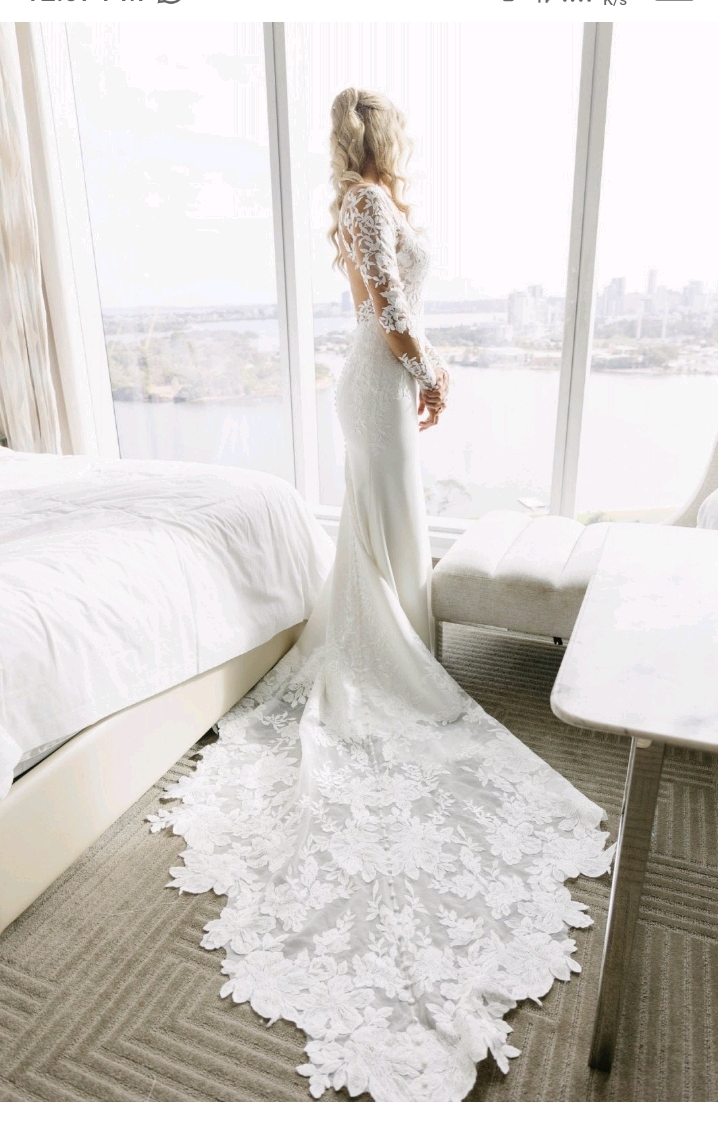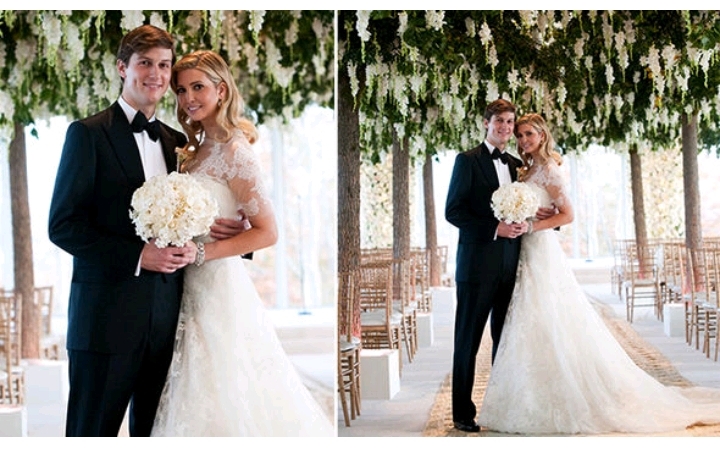CELEBRITY
Celebrity News: ‘I bought my wedding dress for €20 on Depop’ – meet the Irish couples walking down the aisle for.. see more details below

Celebrity News: ‘I bought my wedding dress for €20 on Depop’ – meet the Irish couples walking down the aisle for.. see more details below
‘I Bought My Wedding Dress for €20 on Depop’ – Meet the Irish Couples Walking Down the Aisle for Less
In an era where the average Irish wedding costs upwards of €30,000, a growing number of couples are bucking tradition and embracing frugality without sacrificing their dream day. From second-hand dresses sourced on Depop to minimalist ceremonies in stunning locations, these Irish couples are proving that love doesn’t need a hefty price tag. This article explores the inspiring stories of those who’ve walked down the aisle for less, highlighting their creativity, sustainability, and commitment to what truly matters.
The Rising Cost of Weddings in Ireland
Weddings in Ireland have long been synonymous with celebration, community, and, increasingly, expense. According to a 2024 survey, the average cost of an Irish wedding hovers around €33,000, with venue hire, catering, and attire making up the bulk of the budget. For many, this figure represents years of savings or even loans—43% of couples report struggling to stay within budget, with some overspending by €5,000 or more. The pressure to deliver a “perfect” day often overshadows the essence of the occasion: the union of two people in love.
Yet, as the cost of living rises and environmental awareness grows, a counter-movement is emerging. Couples are rethinking the lavish norms, opting instead for intimate, budget-friendly weddings that reflect their values. One standout example is Finn van der Aar, who famously bought her wedding dress for just €20 on Depop, sparking a conversation about affordable, sustainable nuptials.
Finn and Huib van der Aar: A €2,000 Dream Wedding

Finn van der Aar, a marine scientist and content creator originally from Dublin, and her Dutch husband Huib tied the knot in February 2021 on the Portuguese island of Madeira. Their wedding, costing less than €2,000, is a testament to ingenuity and eco-consciousness. “I’d always wanted to get married, but for us, having a big wedding was never a priority,” Finn explains. “Our focus was on enjoying the day with friends, good food, and drinks—that was it.”
Finn’s wedding dress, a steal at €20 on Depop, fit her like a glove. Paired with black cowboy boots and a black velvet ribbon she stitched on herself, it embodied her pre-loved style—a passion inspired by her grandmother’s love for second-hand shopping. The bouquet, handmade from locally sourced flowers bought at Madeira’s markets, cost another €20, with greenery thrown in for free by kind vendors. Even their honeymoon at an eco-hotel, complete with meals and massages, came in at €600 for four nights.
This thrifty approach wasn’t just about saving money—it was a reflection of Finn and Huib’s commitment to sustainability. With Finn expecting their first child later that summer, their wedding doubled as a celebration of a lifestyle that prioritizes meaning over materialism. “Being frugal is in fashion for both economic and environmental reasons,” Finn notes, and their story resonates with a growing number of couples seeking alternatives to the traditional wedding industrial complex.
Dorothy Fletcher and Colin Bentley: €7,000 and a Second-Hand Gown
Another couple, Dorothy Fletcher and Colin Bentley, planned their March wedding in Balbriggan, Co. Dublin, for just €7,000—a quarter of the national average. Dorothy, a web designer who recently returned from the U.S., snagged her brand-new wedding dress at an Oxfam shop for €50. “Money is a huge factor for us, but even if we weren’t in a recession, I’d still look for a bargain,” she says. “It’s gorgeous, and I love that it’s second-hand.”
Their budget-friendly approach aligns with a broader trend. eBay reported a 60% rise in wedding dress listings in early 2014, while Oxfam struggled to keep up with demand for pre-loved gowns. Dorothy and Colin’s wedding proves that cutting costs doesn’t mean cutting corners—it’s about prioritizing what matters. For them, that meant a small, heartfelt ceremony over an extravagant affair.
Why Go Low-Cost? Economics, Environment, and Authenticity
The shift toward affordable weddings isn’t just a fad—it’s a response to real-world pressures. Ireland’s cost-of-living crisis has made many reconsider splashing out tens of thousands on a single day. At the same time, younger generations, particularly Gen Z and millennials, are embracing second-hand fashion and sustainable choices. Depop, a social shopping app blending eBay’s marketplace with Instagram’s aesthetic, has become a go-to for brides like Finn, offering designer dresses at a fraction of their original cost.
Beyond economics, there’s an authenticity to these weddings that lavish events sometimes lack. Ned and Eileen Cusack, married in 1944 during Ireland’s Emergency, wore simple attire—a coral pink frock for her, his uniform for him—and celebrated with 20 guests at a modest breakfast. Decades later, their story reminds us that weddings once prioritized love over luxury. Today’s budget-conscious couples are channeling that spirit, focusing on intimacy and personal touches rather than societal expectations.
How They Did It: Tips from the Thrifty Brides
For those inspired to follow suit, these couples offer practical advice:
Second-Hand Shopping: Platforms like Depop, Stillwhite, and eBay are treasure troves for wedding attire. Finn’s €20 dress and Dorothy’s €50 find show that quality doesn’t require a high price tag.
DIY Details: Finn crafted her bouquet, saving hundreds compared to pre-made options starting at €100. Simple, local materials can add charm without cost.
Off-Peak Venues: Choosing a less popular date or location—like Finn’s Madeira wedding during a quiet season—slashes venue and travel expenses.
Minimalist Guest Lists: Smaller gatherings reduce catering and venue costs. Dorothy and Colin kept theirs intimate, while Finn and Huib invited just a handful of friends.
Eco-Friendly Choices: Sustainable options, like eco-hotels or locally sourced flowers, often come with lower price tags and a feel-good factor.
The Bigger Picture: A Cultural Shift
These stories reflect a broader cultural shift in Ireland. WeddingsOnline.ie reports that while 70% of couples still opt for religious ceremonies, humanist and civil ceremonies are rising, often with simpler setups. The average guest list has shrunk from 170 to around 100-150, and micro-weddings—small, intimate affairs—are gaining traction. Post-pandemic, the demand for weddings surged by 81%, but so did the desire for affordability and meaning.
Experts note a 20% increase in wedding costs since 2019, driven by inflation and pent-up demand. Yet, couples like Finn and Huib, and Dorothy and Colin, show that creativity can outmaneuver market forces. “It’s about deciding your priorities,” says wedding planner Kelly Hartmann. “If a big party matters, cut back on the dress. If it’s the venue, simplify the decor. The best wedding is the one that’s authentically you.”
Conclusion: Love on a Budget
The tales of these Irish couples challenge the notion that a wedding’s worth lies in its price tag. Finn’s €20 Depop dress, Dorothy’s €50 Oxfam gown, and their pared-down celebrations highlight a truth as old as love itself: it’s the commitment, not the cost, that defines the day. As more brides and grooms embrace this mindset, Ireland’s wedding landscape is evolving—proving that walking down the aisle for less can still lead to a lifetime of happiness.
Whether you’re a bride-to-be scouring Depop or a couple dreaming of a backyard vow exchange, take heart: your perfect day doesn’t need to break the bank. It just needs to reflect you.












